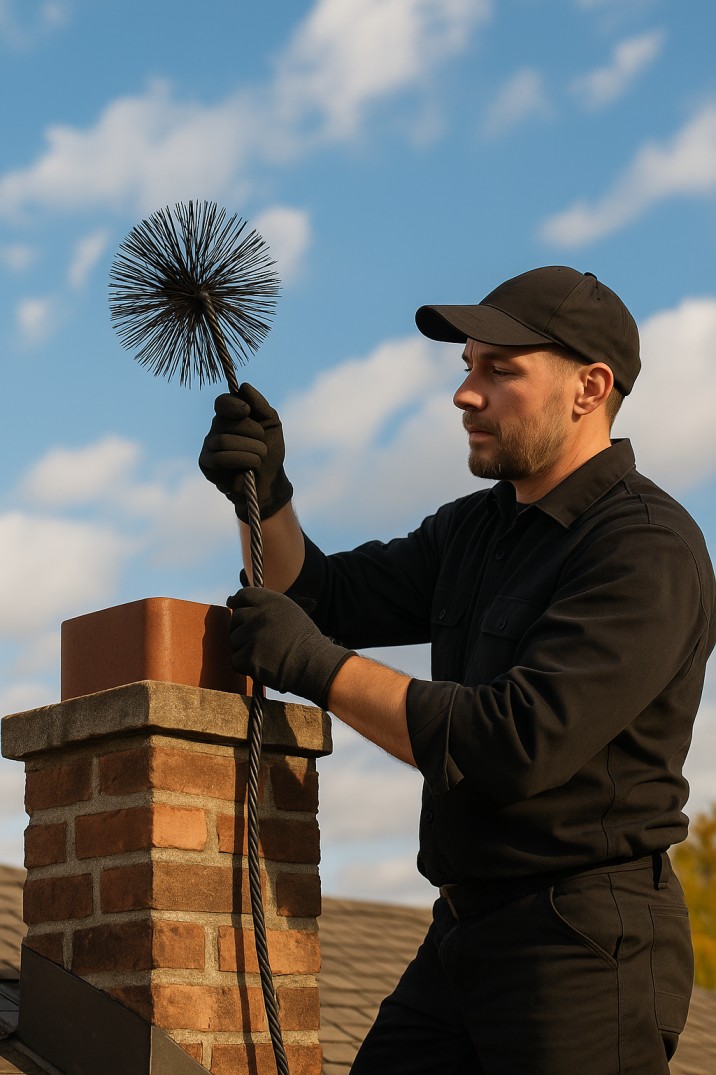If you live in Hamilton and have a fireplace, wood stove, or even a gas furnace venting through a chimney, there’s one hidden component quietly doing the heavy lifting: your chimney liner. It’s not something you see or think about often but it’s a critical part of your home’s fire safety system.
Chimney liners might sound like some boring construction detail, but they’re anything but. In fact, they can make the difference between a safe, cozy fire and a devastating chimney fire. Let’s break it all down in a simple, real-world way so you can understand exactly what a chimney liner does and why it matters in Hamilton homes especially when it comes to choosing the right chimney liner in Hamilton.
So, What Is a Chimney Liner Anyway?
A chimney liner is basically a barrier that lines the inside of your chimney flue the tunnel where smoke and heat travel up and out of your home. Think of it like the chimney’s inner jacket. Without it, the heat from a fire would be in direct contact with your chimney’s brick or mortar, which can crack, deteriorate, or catch fire over time.
Hamilton homes, especially older ones in neighborhoods like Dundas, Stoney Creek, or the central mountain area, were often built before modern safety codes required chimney liners. That means a lot of local homes might not have one or might have an old clay liner that’s seen better days.
The Fire Safety Role: Why It Matters More Than You Think
The real job of a chimney liner is to keep the heat and flames inside the flue and away from the walls of your home. Without that protection, the extreme temperatures from regular fires or worse, a creosote-fueled chimney fire can quickly ignite wood framing behind your brickwork.
Here’s a simple table to show how a liner helps prevent fire risks:
| Without Chimney Liner | With Chimney Liner |
| Heat reaches masonry and wood frame | Heat stays inside fire-resistant liner |
| Creosote buildup directly on chimney | Creosote more controlled and easier to clean |
| Greater risk of structural damage | Masonry protected from corrosion and cracks |
| Increased carbon monoxide seepage | Gases safely vented outside |
“A chimney liner is like armor for your chimney. It takes the heat, shields your home, and does a job that most people never see but absolutely need.”
Local Chimney Expert, Hamilton
Key Features of a Good Chimney Liner
If you’re wondering what makes a chimney liner reliable and effective, here are the features to look for:
- Heat Resistance: Handles high temperatures without breaking down
- Durability: Resists corrosion, moisture, and chemical byproducts
- Proper Fit: Custom-sized to match your fireplace or stove
- Material Choice: Available in clay, stainless steel, or aluminum
- Ease of Maintenance: Easier to clean, which means less creosote buildup
In Hamilton, where winter temps can dip fast and fires run frequently, stainless steel chimney liners are a smart pick. They’re durable, work with multiple fuel types, and meet most modern code standards.
How Much Does a Chimney Liner Cost in Hamilton?
Chimney liner pricing in Hamilton varies depending on your chimney’s height, the material used, and whether extra work (like old liner removal or flue repair) is needed. Here’s a general idea:
| Type of Chimney Liner | Estimated Cost (Installed) |
| Clay Tile | $1,500 – $3,000 |
| Stainless Steel (Flexible) | $1,800 – $3,500 |
| Stainless Steel (Rigid) | $2,000 – $4,000+ |
| Aluminum (for gas appliances) | $800 – $1,800 |
Although the upfront cost might seem steep, installing or upgrading your liner is an investment in long-term safety and property protection. Plus, many installers in Hamilton offer warranties of 10 years or more.
Safety Tips and When to Inspect Your Liner
Whether your home is 100 years old or just 10, chimney liner maintenance should be on your seasonal checklist. Most Hamilton professionals recommend annual chimney inspections, especially before the heating season kicks in.
Here’s how to stay safe:
- Schedule an annual chimney sweep & inspection
- Have your liner checked for cracks, corrosion, or gaps
- Replace clay liners with stainless steel if damage is found
- Keep your chimney cap clean and intact to prevent moisture
- Don’t burn unseasoned wood it increases creosote buildup
Skipping inspections or ignoring minor issues can lead to a chimney fire or worse, a house fire. And because Hamilton winters can be long and cold, your chimney works overtime. It deserves a little attention, too.
Final Thoughts: Don’t Skip the Liner
If there’s one takeaway from all this, it’s simple: a chimney liner is not optional it’s essential.
In Hamilton homes, where fireplaces are often older and winter use is frequent, a functioning chimney liner is your best line of defense against heat damage, smoke leaks, and fire hazards. Whether you’re moving into a new home, living in a heritage property, or just haven’t looked at your flue in years, now’s the time to take action.
A quick inspection could save you thousands in repairs or even save your home.
Read More: Chimney Sweep
